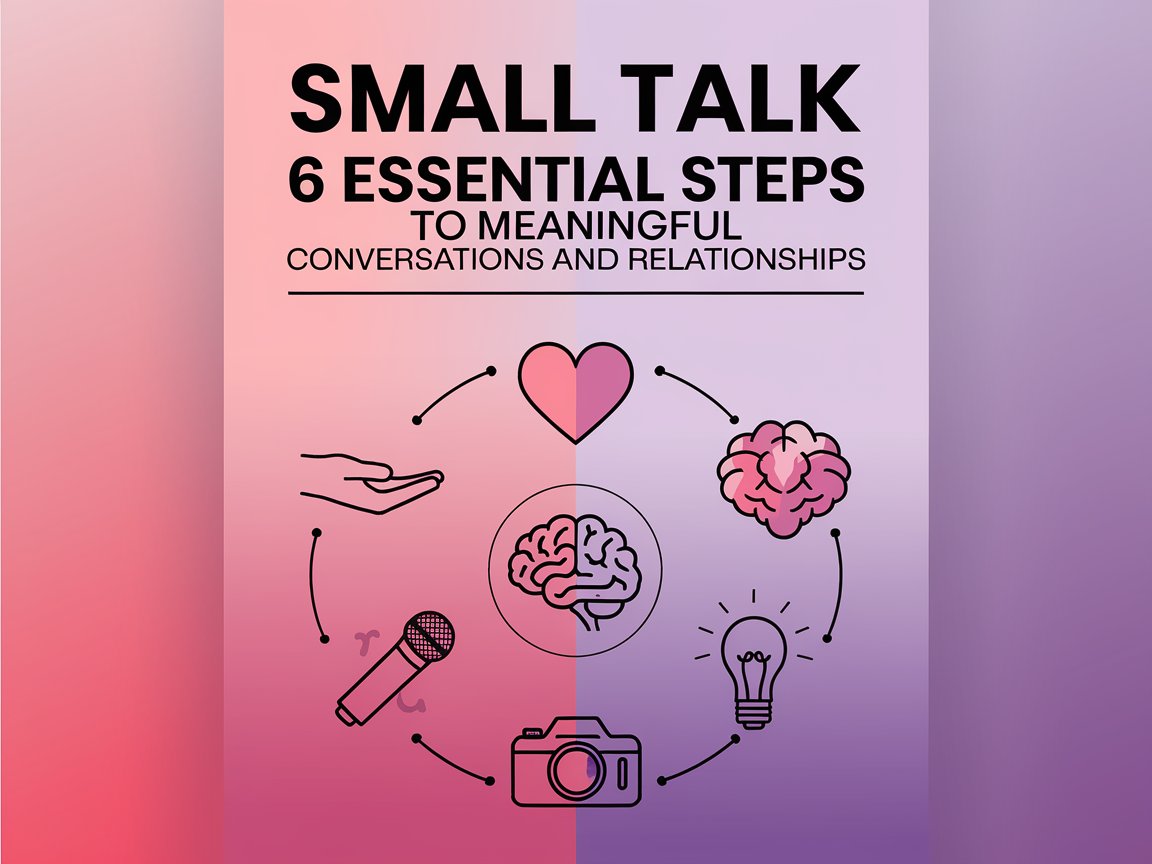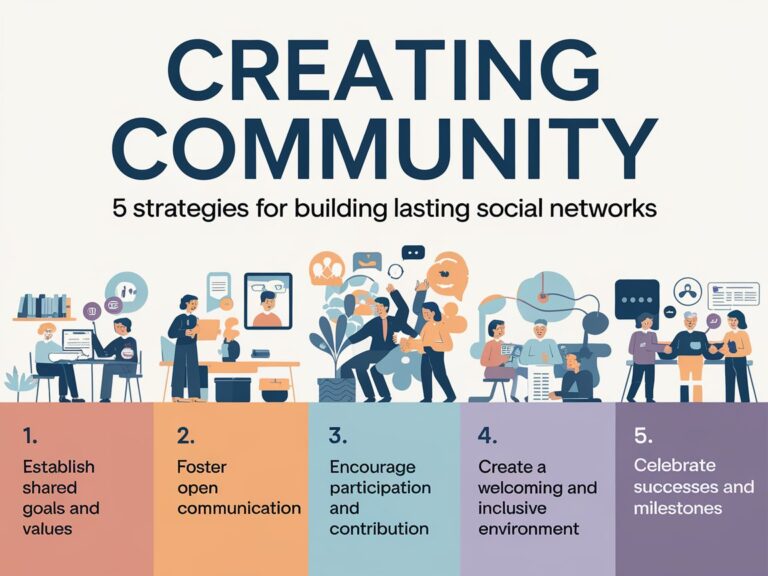6 Essential Steps to Meaningful Conversations and Relationships
In an age where digital communication often overshadows face-to-face interactions, the significance of meaningful conversations has never been more crucial.
While small talk can serve as a pleasant icebreaker, it often lacks the depth needed to foster genuine connections. Moving beyond superficial exchanges is essential for developing lasting relationships—whether personal or professional. This guide provides six essential steps to help you engage in meaningful conversations that can transform your relationships, allowing them to flourish and deepen over time.
Step 1: Active Listening
Active listening is the cornerstone of any meaningful conversation. It goes beyond merely hearing words; it involves fully engaging with the speaker, understanding their message, and responding thoughtfully. When you practice active listening, you convey respect and interest, which can help build trust.
Techniques for Improving Listening Skills
- Maintaining Eye Contact: Establishing eye contact shows the speaker that you are focused and engaged. It creates a sense of connection and encourages them to share more.
- Nodding and Using Verbal Affirmations: Simple gestures like nodding or using phrases like “I see” or “That’s interesting” indicate that you are actively following the conversation. These cues reassure the speaker that their thoughts are valued.
- Summarizing and Reflecting Back What Was Said: After the speaker has finished sharing, summarize their main points to show that you were listening. For example, “So what you’re saying is…” This not only clarifies any misunderstandings but also encourages the speaker to elaborate further.
Benefits of Active Listening in Relationships
Active listening fosters an environment where individuals feel safe to express themselves. When people know they are being heard, they are more likely to open up, leading to deeper and more meaningful exchanges. This step helps build a strong foundation for trust and understanding, critical elements for any lasting relationship.
Step 2: Asking Open-Ended Questions
To move past small talk, it’s essential to engage in dialogues that invite deeper exploration. One effective way to do this is by asking open-ended questions, which encourage the other person to share their thoughts and feelings in greater detail.
Open-Ended vs. Closed-Ended Questions
Open-ended questions are those that cannot be answered with a simple “yes” or “no.” They require elaboration and can lead to richer conversations. In contrast, closed-ended questions often yield brief responses, limiting the depth of the discussion.
Examples of Effective Open-Ended Questions
- “What has been the most rewarding experience you’ve had this year?”
- “How did you become interested in your current career?”
- “What are some challenges you’ve faced, and how did you overcome them?”
How These Questions Encourage Deeper Dialogue
By asking open-ended questions, you create opportunities for the speaker to share their experiences, values, and emotions. This type of inquiry not only fosters a deeper understanding but also signals that you are genuinely interested in their thoughts. As the conversation unfolds, it can reveal common ground and shared experiences, further enriching your connection.
Step 3: Sharing Personal Stories
Vulnerability can be intimidating, but sharing personal stories is a powerful way to deepen connections. When you open up about your experiences, you create an environment that encourages the other person to reciprocate.
The Role of Vulnerability in Building Connections
Vulnerability fosters intimacy and trust. When you share personal anecdotes, you reveal aspects of yourself that others may find relatable or inspiring. This openness can lead to a more profound understanding of one another and can help dismantle barriers that often exist in initial conversations.
Tips for Sharing Stories That Resonate
- Be Authentic: Choose stories that reflect your true self, as authenticity resonates with others.
- Relate to the Topic: Share anecdotes that relate to the subject at hand to keep the conversation flowing naturally.
- Keep It Balanced: While sharing is important, ensure that the conversation remains a two-way street. Allow the other person to share their experiences in return.
How Personal Anecdotes Create a Sense of Intimacy
When both parties share personal stories, it creates a sense of camaraderie. This shared experience can deepen the emotional connection and allow for more profound discussions. Over time, this intimacy can transform acquaintances into friends or colleagues into collaborators, enhancing the quality of your relationships.
Step 4: Finding Common Interests
Shared interests serve as a vital connection point in relationships. Identifying and exploring these commonalities can foster deeper conversations and a stronger bond.
Importance of Shared Experiences in Relationships
When you discover mutual interests, it opens doors to shared activities and conversations. This common ground creates a sense of belonging and can enhance the overall quality of the relationship. Engaging in activities together also provides opportunities for further bonding.
Strategies for Identifying Common Interests
- Engaging in Activities Together: Participating in group activities or events can help you discover shared passions organically.
- Discussing Hobbies and Passions: Ask about their interests and hobbies. Questions like “What do you enjoy doing in your free time?” can lead to insightful discussions.
The Impact of Common Interests on Relationship Depth
When you uncover shared interests, it lays the groundwork for deeper engagement. This commonality can spark further conversations and experiences that deepen your connection. Whether it’s a shared love for music, travel, or a particular sport, these interests can serve as a foundation for your relationship, enhancing its richness and longevity.
Step 5: Being Present
In our fast-paced world, distractions abound, making it easy to lose focus during conversations. Being present is crucial for fostering meaningful exchanges and establishing authentic connections.
The Significance of Being Fully Engaged in the Moment
Being present means dedicating your full attention to the conversation at hand. This attentiveness communicates respect and genuine interest, creating a more enriching experience for both parties.
Techniques to Eliminate Distractions During Conversations
- Put Away Devices: Silence your phone or set it aside to avoid distractions.
- Create a Comfortable Environment: Choose a setting conducive to conversation, whether it’s a quiet café or a cozy corner at home.
How Presence Enhances the Quality of Interactions
When you are fully present, the quality of the conversation improves significantly. Active engagement allows for a deeper understanding of each other’s thoughts and feelings, fostering a sense of connection that superficial exchanges lack. Being present also encourages the other person to engage more fully, creating a positive feedback loop that enhances the relationship.
Step 6: Practicing Empathy
Empathy is the ability to understand and share the feelings of another. It is a vital component of meaningful conversations and relationships.
Definition and Importance of Empathy in Relationships
Empathy allows you to connect with others on a deeper emotional level. When you practice empathy, you validate the other person’s experiences and emotions, making them feel understood and supported.
Ways to Practice Empathy During Conversations
- Validating Feelings and Experiences: Acknowledge the speaker’s feelings by saying things like, “I can see why you feel that way.”
- Offering Support and Understanding: Show that you care by asking how you can help or simply being there to listen.
The Long-Term Benefits of Empathetic Communication
Empathetic communication builds trust and fosters a sense of safety in relationships. When people feel understood and supported, they are more likely to share openly, leading to richer and more fulfilling conversations. Over time, this practice can deepen emotional bonds and create a resilient foundation for the relationship.
Conclusion
Moving beyond small talk requires intentional effort and practice. By employing these six essential steps—active listening, asking open-ended questions, sharing personal stories, finding common interests, being present, and practicing empathy—you can cultivate deeper, more meaningful conversations and relationships. Each step contributes to a more profound connection, allowing you to engage authentically with others and enrich your social landscape.



